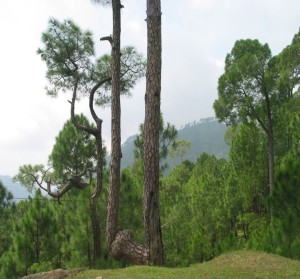 |
 |
 |
 |
Invitation for the Third International Conference on Creativity and Innovations at Grassroots [ICCIG], January 19-22, 2015
Indian Institute of Management, Ahmedabad
Giving voice, visibility and velocity to creativity and innovative potential of common people at grassroots has been the key goal of inclusive development. Honey Bee Network has emerged as a committed new social movement in support of knowledge rich, economically poor people. In order to enrich the ecosystem for inclusive and empathetic innovations, the Third ICCIG will pool the insights from the ground and global playfields of ideas, institutions and initiatives.
Twenty five years ago, Honey Bee Network started to raise the voice for collaboration between formal and informal sectors, respect for local/indigenous knowledge for conservation of biodiversity and associated knowledge system, sharing of benefits through ethical supply chains and recognizing, respecting, rewarding local communities and individual innovators and traditional knowledge holders. Today, the concern for inclusive innovation has become much more widespread but the voice of the knowledge rich, economically poor people and the youth is still not heard adequately. Earlier Tianjin Declaration was issued in 2007 in a cooperative research program between IIMA, Honey Bee Network and Tianjin University of Finance and Economics ( https://anilg.sristi.org/tianjin-declaration-for-promoting-green-grassroots-innovation-for-harmonious-development/ ) and Ahmedabad Declaration issued at the end of Second ICCIG at IIMA ( https://anilg.sristi.org/ahmedabad-declaration-issued-on-the-concluding-day-of-iccig-2-iima-dec-2012-a-plea-for-giving-voice-visibility-and-value-add-to-the-creativity-and-innovation-at-grassroots/ ).
We invite the young (in body and/or mind) scholars, academics, corporate leaders, policy makers, activists, administrator, local community representatives, organizational leaders, various social and cultural networks engaged in empowerment of local creativity, public and private initiatives for making society more fair and just in dealing with various segments.
Key themes:
1. Institutional transformation:
1.1. Common property resource institutions play a critical role in sustainable natural resource management at all levels in society. We need to learn from indigenous/local institutions, which have succeeded in managing resources well for so long. The concern for conservation has been declining while designing infrastructure projects and various urban and rural interventions. How to give voice to perfect strangers and other natural beings is becoming a big challenge for conservationists.
1.2. Public/private, civil society institutions create norms for exchange of knowledge, information, resources and ideas across formal and informal sectors. How do we create mutuality in the norm setting processes in both the sectors?
1.3. The crafted institutions often fail to build upon existing institutional infrastructure. The political economy of existing institutions needs careful analysis to expand the space and scope for disadvantaged people. The grafted institutions build upon existing norms and values and therefore may have higher sustainability. The issue needs to be debated and elaborated.
1.4. Public delivery systems impact the life of almost every citizen world over. The mantra of public-private partnership has broken new ground but has also sometimes led to unfair exploitation of social and natural resources. The need for transparency and social accountability has triggered a lot of experiments and innovations in public systems. These need to be consolidated so that the change agents involved in these transformations can ally themselves with other creative people.
2. Educational innovations
2.1. How do teachers at primary or secondary school level transform educational context in government schools in which the poorer children often study, can their creativity become the hub of educational policy?
2.2. How do we democratize the access of disadvantaged children to the high quality content and mentors?
2.3. Can teachers learn from children, and build upon their curiosity, compassion and empathetic value system?
2.4. The academia-industry-informal sector linkage in higher education is weak, what are the strategies which have worked? Can techpedia.in model illuminate such linkages worldwide?
2.5. Can innovations by technological youth become a pivot of frugal engineering, products and services for the inclusive development? How can students of higher education search, spread, celebrate innovations and sense the unmet needs of various societies?
2.6. Innovation in governance of education need to be tracked and transferred across institutional and cultural boundaries for more democratic and transparent systems.
3. Cultural creativity
3.1. How does one prevent deskilling of society through large scale employment programs building upon manual rather than mental labour ignoring in the process unique cultural and other skills?
3.2. Can entrepreneurial open collaborative platforms be generated for nurturing folk and grassroots culture and its incorporation in developmental programmes and philosophies?
3.3. The culture of creativity spawns numerous innovations at grassroots without which the engine of economic and social progress would not run. What are the facilitators and inhibitors of cultural creativity in different societies? The culture of resistance provides the fodder for pluralism and diversity. What are the emerging trends in strengthening such resistance in the wake of globalization and massive consumerism?
3.4. While culture occupies such an important space in our consciousness, the governance including the ministry dealing with culture is considered a very low importance position. Nations are built or destroyed depending upon how cultural core of the society evolves through various struggles.
3.5. Can conscious creativity be shaped by different modes of entertainment that the society patronizes? Is individual choice of entertainment now limited to the modern entertainment industry? How can we revive and encourage local modes of entertainment to conserve the diversity in forms and functions of creativity.
4. Technological innovations
4.1. The concept of deviant research, grassroots innovations, frugal or empathetic innovations, inclusive innovations, farmers’ or workers’ innovations were much less recognized 25 years ago when Honey Bee Network was born. How do we assess the contemporary terminological and conceptual clarity or confusion in these concepts?
4.2. To what extent have various countries recognized the need for redefining the concept of National Innovation System to include the bridge between formal and informal systems of innovations?
4.3. Can companies and other organizations in public and private sectors join hands with innovations by youth and informal sector for creating genuine and authentic reciprocity and responsibility in the knowledge exchange?
4.4. What can we learn from the models of benefit sharing emerging through validation and value addition in people’s knowledge and creativity? Why have these models remained so underdeveloped in most parts of the world? What are the implications of such asymmetry and lack of accountability between formal and informal system for the sustenance of grassroots frugal/empathetic innovation systems?
4.5. What lessons can be learnt from Indian model of inclusive innovations as evident from the experience of National Innovation Foundation [NIF] for other regions and vice versa?
4.6. What are the gaps in the inclusive innovation ecosystem including the investment and entrepreneurial spaces in society?
4.7. What drives people to devise extremely affordable solutions? What is the tolerance limit of tradeoff between accuracy and affordability and how does it affect its accessibility and acceptability?
4.8. What kind of new heuristics are learned from thousands of grassroots green innovations and traditional knowledge examples for innovations in totally unrelated sectors as well as for other communities? How do we learn from these innovations at four levels: [a] artefactual, [b] analogic, [c] heuristic and [d] gestalt or configurational.
4.9. What kind of motivations influence common people to innovate? We need to look at, both extrinsic and intrinsic motivations to derive a matrix of incentives wherein people do not have to wait only for the formal sectors to solve their problems. The idea is to create an ecosystem conducive for experimentation; alone or in partnership with communities, other innovators or scientists and technologists in formal or informal sector.
5. Public policy for empathetic innovation
5.1. Many countries and companies have started open innovation platforms in the recent past but adequate reciprocity towards the knowledge providers remains to be institutionalized. What role can public policy play so that knowledge exchange between the formal and informal sectors can become smoother?
5.2. The role of public, private and civil society organisations in development and diffusion of extremely affordable innovations remains fuzzy. Recent studies on the subject have to be critically evaluated to identify future directions.
5.3. The innovations in public governance and delivery systems play an important role in fuelling democratic aspirations. How have different countries looked at increasing expectations and declining performance of the formal systems? What are the lessons one can learn from china, south east Asia, Africa, Latin America and European societies which need blending for inclusive development.
6. Biodiversity conservation, benefit sharing and development of ethical supply chain
6.1. Despite deliberations at inter-governmental panel at WIPO, Convention on Biological Diversity, Desert Conventions, etc., not much seems to have changed. What are the policy directions that can help us move towards a new consensus? Case studies of knowledge based interface between communities and outside organizations are welcome.
7. Mind to market
7.1. Innovative strategies for using social media, e-commerce and other platforms to link grassroots to Global [g2G] markets.
7.2. Role of risk capital in linking innovations with enterprise.
7.3. Protection of intellectual property rights of knowledge holders, evolution of the concept of ‘Technology Commons’ and open source technologies.
7.4. The central concern would be to explore the ways in which large corporations can join hands with small innovators to reach the consumers at the base of economic pyramid.
7.5. How does recognition and reward for innovators influence their motivation to collaborate and deal with markets collectively?
7.6. Which of the new IP models can do justice to the need for protection and incentives for collaboration?
8. Innovations in urban spaces for more accessible social infrastructure
8.1. In view of the rural to urban migration, lot of knowledge has moved to urban spaces. The urban markets are often unable to discriminate or valorize such place-based knowledge.
8.2. Before the erosion of knowledge becomes irreversible, what kind of strategies be developed for knowledge based enterprises in urban areas that put special emphasis on the traditional/tacit knowledge of urban workers.
9. Integrating women’s knowledge creativity and innovations in the innovation ecosystem
9.1. The knowledge of women and other workers has been given far lesser importance so far. How do we expand opportunities for women and worker innovators?
9.2. Which kind of institutional innovations facilitate the uncovering of the creative potential of women and other workers?
10. Coping creatively with climate change: community perceptions and innovative response for a sustainable future
10.1. Given the erratic nature of whether induced changes in many parts of the world, the traditional coping strategies are becoming weaker. Which kind of institutional and technological interventions are required to increase the capacity of communities in coping with climate risks? Are there innovative models available, which have achieved enhanced resilience?
10.2. The agro-biodiversity has played an important role in improving resilience in the wake of risks. However, consumer preference for traditional varieties has not kept pace with time. What are the strategies that have reversed the erosion of agro-biodiversity and associated knowledge system?
11. Designing organisations/social networks/open innovation platforms for linking formal and informal sector in reciprocal, respectful and mutually rewarding manner
12. Empathetic innovations: Beyond reverse, emergent, open and frugal innovations
13. Circular economy and green supply chain to support grassroots innovators
13.1. Why should the society turn to grassroots innovators for frugal designs? As grassroots innovators use second hand components to a large extent, their innovations are often not recognized in the formal sector, more so in the legal fraternity as standards for them do not exist. So, what are the steps necessary to “legitimize” these innovations and the impetus they would give to popularize circular economy
The enquiries for organizing workshops, panel discussions, innovation exhibition and other activities during the conference may be sent to the secretary, iccig@iimahd.ernet.in. Those who wish to organize parallel sessions of their own networks alongside the conference may also write so that synergy can be exploited for creating empathetic network of networks.
last date for abstract sept 30
last date for paper NOv 30

Dear Sir,
I have started an innovative programme called Khula Aasman. The programe was initiated at TISS in 2009. The concept was to expose students of higher education towards arts and crafts.The idea is to encourage youngsters to expose to various possibilities while working at the grassroot level. The effort is to be able to bring the creative experience to the marginalised sections either for bonding together or increasing the self esteem level by doing things with hands.
The prgramme ran in TISS till 2012 and now it has been registered as a seperate NGo and doing work independantly.
One of the mission is to be able ti initiate unconditional spaces of creativity focusing process than the output. CVreating spaces to be able to work with soil and hands.
Khula Aasman would like to take part in the conference. Pl let us know th procedure for registration etc.
Thank you,
Sarita Ganesh,
Khula Aasman,
Craftig Art for Social Change
pl send your asbtract to iccig@iimahd.ernet.in and we could invite you to a hands on workshop , perhaps a workshp of all such groups which are tryng to do what you are trying might be a good idea,
mail me more suggestions
anil
Details are given at Iccig.in
Write if any doubts at anilgb@gmail.com